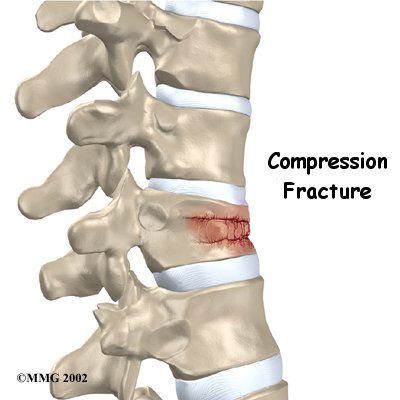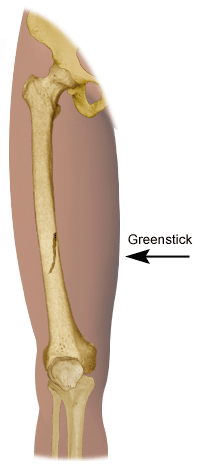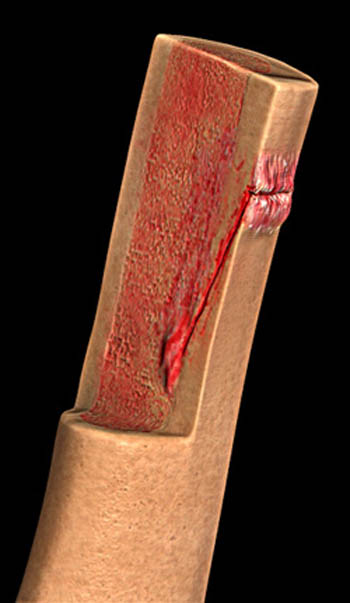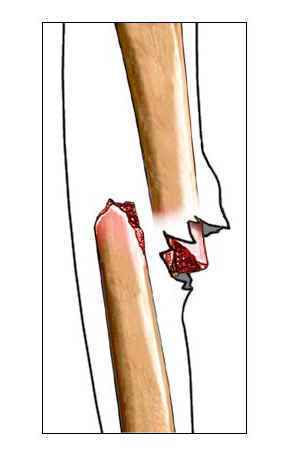Science of Fracture
What is Fracture
Any break in the continuity of bone tissue (hairline or multi-fragmented (comminuted))
Why Fracture?
Stress applied to the bone tissue exceeds its strength
Stress applied to the bone tisse is rapid and multi-directional
Types of Forces
Direct: fracture occurs at point of force impact
Indirect: fracture occurs as a result of compression or rotational force applied at a distance
Fracture Types
http://www.nytimes.com/imagepages/2007/08/01/health/adam/1096Fracturetypes1.html
http://www.rush.edu/rumc/page-P07392.html
http://www.eorthopod.com/content/spinal-compression-fractures
http://radpod.org/wp-content/uploads/2007/05/calcaneal_avulsion.jpg
Stress Fracture
- Occurs in normal bone subjected to repetitive microtrauma from mechanical stress.
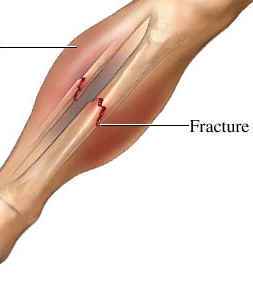
- Most, but not all, stress fractures involve the lower extremity.
- Jumping, ballet, sports, marching, etc. common precipitating events.
- Common sites:
calcaneus -- jumping
tibia/fibula -- running
patella -- hurdling
pelvis, obturator ring -- gymnastics
ribs -- heavy lifting, coughing
vertebrae, pars interarticularis -- lifting
scapula, coracoid -- trap shooting
humerus. ulna -- throwing baseball, pitching
hamate -- golf, baseball
- Typically results in longitudinal type fracture due to repetitive torsional (rotational) loading
http://www.radsource.us/clinic/0803
Risk Factors
- trauma/sudden impact
- history of osteoporosis (loss of bone density)
- female
- body type (tall, thin)
- history of falls
Fracture Incidence and Social Impact
- Third most common surgical procedure is fracture repair
- One-third of patients diagnosed with fracture need hospitalization
- Half of all inpatient hospital stays were due to fracture of the femur
- Incidence of fracture doubles every five years, starting at age 50.
- Can lead to permanent loss of mobility and/or independence
- In adolescents, fracture near the growth plate can slow or inhibit further bone growth in the affected limb
- Can be an indicator of child or elder abuse and/or neglect
Healing from Fracture
- With proper fixation/positioning, bone can heal in as quickly as 4-6 weeks
- healing time in children is typically 4-6 weeks
- healing time in adolescents is typically 6-8 weeks
- healing time in adults is typically 10-18 weeks
- Healing time is dependent on fracture type, stability, integrity of blood supply, co-morbities (diseases, soft tissue damage), patient age, and location
- Remodeling of healed bone is a continuous process based on cellular and mechanical (force) properties
- The following linked animations provide a review of A&P of fracture repair The animations are included to reinforce your understanding bone tissue healing processes. PTAs often reinforce patient education of post-operative precautions by explaining the time needed for bone to regain its strength and, therefore, its function. There are three distinct phases in normal bone healing: 1) inflammation, 2) repair, 3) remodel.
Delayed Fracture Healing
- Describes a slower than normal healing time
- Correlated with
- diabetes mellitus
- smoking
- long-term steroid use
- NSAID use
- poor nutrition
- advanced age
- damage to surrounding tissues (as in open fractures)
Fracture Fixation
Bone can be surgically fixed internally or externally with the use of instrumentation.
Fixation devices can be described as stress shielding (no motion to fracture site - primary healing) and stress sharing (distributes forces to minimize motion - secondary healing)
Normal stresses to bone are transmitted through the devices instead of bone tissue, therefore fixation devices are often removed following fracture union to reverse device-induced osteoporosis.
Types of fixation devices are well-described in your Cameron text. Study pages 201 and 202 and check your understanding.



